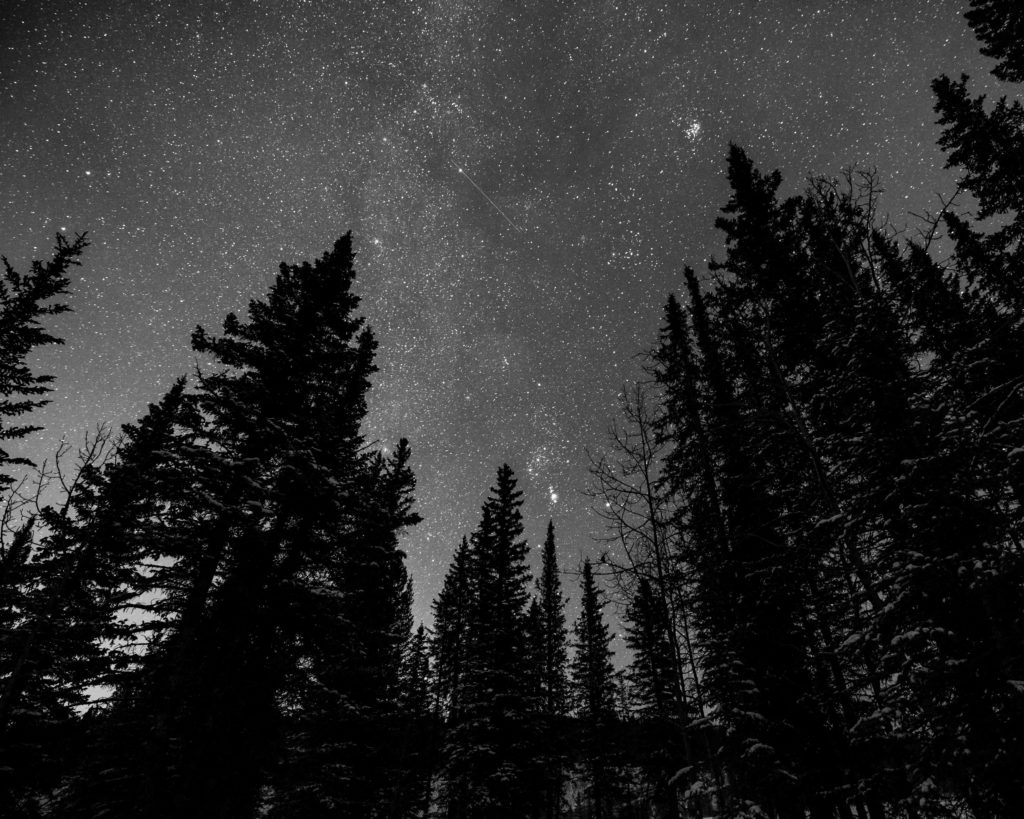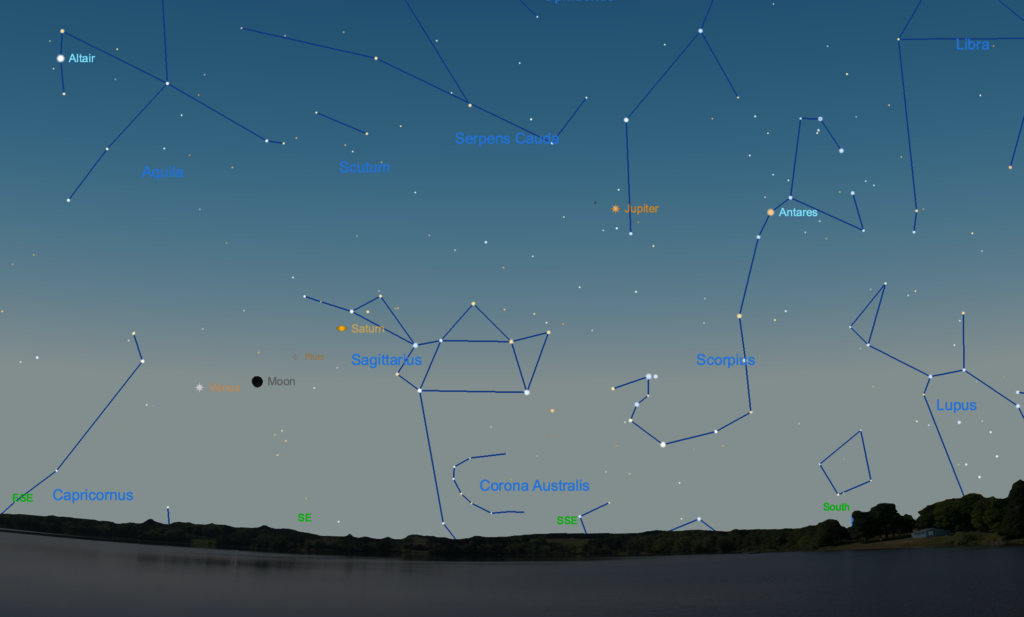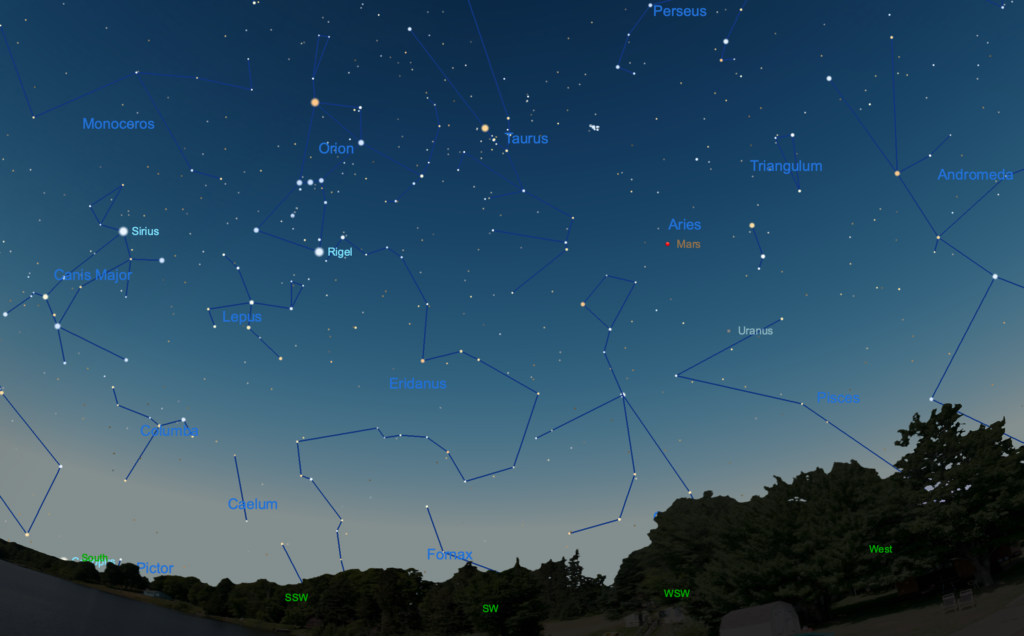
Four bright planets make an appearance in the night and early-morning sky this month. Mars lies in the western sky after sunset, while Venus, Saturn, and Jupiter adorn the eastern and southeastern morning sky before sunrise. Jupiter, in particular, is a dazzling sight as it grows bright and large enough to invite careful inspection with a telescope in the hours before dawn.
The prominent constellations Orion, Taurus, and Canis Major all move westward as March progresses. Deep-sky observers welcome the beginning of galaxy season as the Earth’s nightward side looks out of the plane of the Milky Way into the depths of intergalactic space. And the seasons change as spring begins in the northern hemisphere and autumn begins in the south. Here’s what to see in the night sky this month…
1-3 March 2019. Begin the month by examining three bright planets, Venus, Saturn, and Jupiter, in the eastern pre-dawn sky. On March 2-3, a waning and very slender crescent Moon joins the show. At magnitude -4.1, Venus is the brightest planet of the bunch, but it’s low on the horizon and slightly diminished by the light of the oncoming dawn. Venus dims and grows smaller this month as it turns around the far side of its orbit as seen from Earth. From the southern-hemisphere, Venus is situated higher above the horizon where it continues to shine as the ‘Morning Star’ until mid-year.

6 March 2019. New Moon, 16:04 UT.
7 March. Neptune reaches conjunction with the Sun.
10 March. Uranus is 5o north of the waxing crescent Moon.
11 March. Look for the Moon and Mars in the western sky after sunset. The pair are about four finger-widths apart. Mars is long past the glory days of its opposition last year, but it lingers in the evening sky as it dims from magnitude +1.2 to +1.4 during the month. Forget seeing much detail in a telescope. But watch during March as the red-orange planet brushes just 5o from the Pleiades by month’s end.

12 March. The waxing Moon lies near the Hyades star cluster in the constellation Taurus. Researchers have recently discovered the constituent stars of this magnificent and nearby cluster are slowly drifting apart as their motion overcomes their mutual gravitational attraction.
14 March. First Quarter Moon, 10:27 UT.
14 March. Jupiter reaches western quadrature as it appears at a right angle to the Sun as seen from Earth. Because of this geometry, the shadows cast by the moons onto the planet are particularly dramatic, and there are two double shadow transits this month to observe and enjoy (see below). Jupiter rises around 2 a.m. local time as March begins and around 1 a.m. at the end of the month, and it increases in brightness from magnitude -2.0 to -2.3. It is a dazzling sight in the early-morning sky. By month’s end, the planet has a relatively large apparent diameter of 40”. If you’re an early riser, head out to see Jupiter with your eye or with some optical aid. It lies west of the Teapot of Sagittarius in the southern reaches of the ecliptic.
15 March. Mercury reaches inferior conjunction with the Sun.
18 March. Look for the waxing gibbous Moon and the bright white star Regulus rising in the eastern sky after sunset. The two are about 2o apart as they rise, but during the course of the evening and night, the Moon moves slightly eastward compared to Regulus (along with its diurnal westward motion) such that the pair are separated by about 5o before sunrise.
18 March. At 05:33 UT, grab your telescope to look for a double shadow transit on Jupiter as the shadows of Europa and Ganymede cross the visible face of the planet until 06:05 UT.

20 March. The March Equinox arrives at 21:58 Universal Time. This marks the beginning of spring in the northern hemisphere and autumn in the southern hemisphere.
21 March. Full Moon, 01:43 UT.
21-31 March. Look for the zodiacal light in the west well after sunset. Very dark sky is a must. This tall, faint pyramid of white light, which slopes to the left towards the Pleiades and Hyades, is simply sunlight scattered off fine dust particles in the plane of the solar system. It’s sometimes called the ‘false dawn’ or the ‘false morning’. Wait for the Moon to get out of the way later in the month for the best chance for viewing.
25 March. At 08:06 UT, grab your telescope (once again) to look for a double shadow transit on Jupiter as the shadows of Europa and Ganymede cross the visible face of the planet until 10:04 UT.
26-27 March. Jupiter lies just two finger-widths south of the waning gibbous Moon.
28 March. Last Quarter Moon, 04:10 UT.
29 March. Saturn lies just east of the waning crescent Moon in the eastern/southeastern sky before sunrise. The Moon occults Saturn for observers in eastern Brazil just after midnight local time, and in southern Africa, southern India, and Sri Lanka during daylight hours just after sunrise. Find detailed timing of the event at this link. During this month, Saturn has been lagging Jupiter in the sky by about two hours, so it rises about 3 a.m. local time by the end of March on the other side of the Teapot of Sagittarius from Jupiter. You can see Saturn’s rings in a telescope, to be sure, but the view will only get better as the year progresses.
